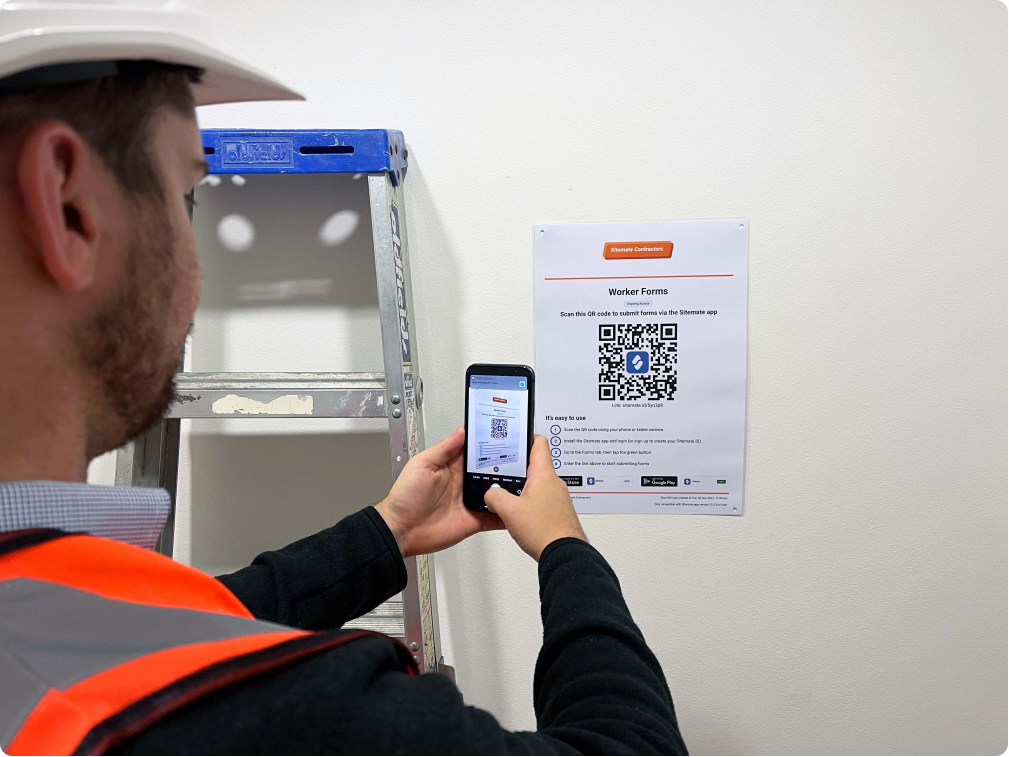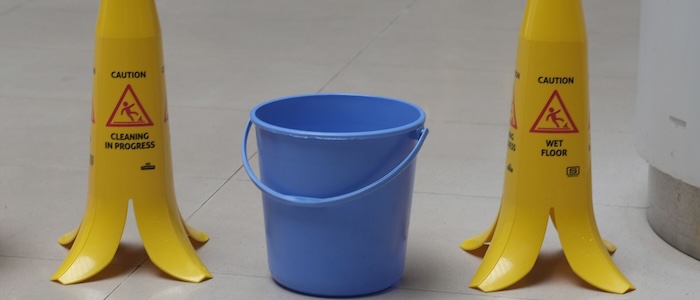Dashpivot Article – Scaffolding Ladder Safety

Scaffolding Ladder Safety
Purpose of Scaffolding Ladder
A scaffold is a temporary structure that allows people to stand on a stable platform when working at height and when scaffold platforms are elevated as much as more than 2 feet (0.6m) above there must be a safe access using a scaffolding ladder. The scaffolding ladder is a ladder that is securely attached to the scaffold and will act as a temporary access for workers on elevated areas or higher places during construction or maintenance work. Scaffolding is inherently dangerous, and it can be even more dangerous when peripheral items like a ladder becomes attached to these structured, hence scaffolding ladder safety should always be a clear safety priority.
It is important that scaffolding ladders are properly installed and secured to reduce the risk of falls from heights. Workers using the ladder must be well trained in handling it and follows all safety guidelines and regulations.
This article is centered on scaffolding ladder safety. To better understand it, we’re going to talk about its purpose, the common accidents regarding scaffolding ladder safety, the essential safety practices for scaffolding ladders and finally a couple of effective methods to integrate scaffolding safety into the daily work.
Common Accidents regarding Scaffolding Ladder Safety
Severe accidents can happen to the workers when safety is ignored in scaffolding especially issues like falling from an elevation which is a severe accident that happens when a person falls from scaffolding ladder that can be due to unsecured ladder, imbalance stance when stepping and without proper personal protective equipment used.
There are also accidents that are caused by instability of the scaffolding ladder that will not result to fall but injury and bruises and one that is often overlooked is failing to check the manufacturing weight limit of the ladder causing accidents due to overloading such as: falls from height, being struck by falling objects or crush injuries from collapsing scaffolding.
To avoid this, below are the essential safety practices that everyone should follow to ensure scaffolding ladder safety.
Essential Safety Practices for Scaffolding Ladders
Scaffolding Ladder Safety 101 - Use the right ladder
A right ladder means it is correct and specifically designed for use with the type of scaffold. Inspect the ladder you will use for scaffolding by checking for damaged or worn-out feet, damage from corrosion, loose nails, screws, or bolts and ensure that the ladder is properly secured and stable for use.
A wrong ladder can cause accidents such as falls from height due to instability, overreaching, slipping on the ladder rungs and injury to the bones.
There are several types of scaffolding ladders: single ladder for access to low-height areas, double ladder (mason’s scaffolding) which are two parallel ladders with vertical rungs and use for moving between ladders, cantilever ladders which is a ladder that has one end that extends outwards for situations where there is an obstacle and can be used to access work on stairs and sloping roofs and a mobile ladder which is a ladder that can be moved around. Always factor in the intended usage when choosing the right ladder to ensure scaffolding safety.
Make sure Scaffold has been inspected for safety
The safety of the of the worker using the scaffolding ladder relies primarily on the structural integrity of the scaffold. There must be a competent person that conducted the inspection making sure connections are secure, the footing is stable and that any signs of damage must be actioned.
There is a free scaffold inspection checklist found here. It has all the standard contents on the inspection, the person conducting the inspection can easily go through the questions from the general requirements and add comments as needed using a phone or a tablet which makes the inspection very convenient. This scaffold inspection checklist is completely customisable as well in case there are specific requirements or inspection items to be added or removed and once you explore thru the benefits of the software app this was made, you can find many useful features such as ability to add a photo, automatic updating and saving and many more.
Ensure correct installation
Position the ladder at a safe angle (between 75-80 degrees) against a scaffold frame, secure it firmly with clamps or brackets at specific points in the scaffold frame make sure it is tightened and lastly, check the condition of the ladder before using it by checking for any damage, loose components or worn rungs.
Use of Personal Protective Equipment in Ladder Safety
Personal Protective Equipment (PPE) is important when working in any industrial or construction setting, especially at height. PPEs ensure scaffolding ladder safety, it protects the worker from hazards associated with climbing the scaffolding ladder. When climbing the ladder, wear personal protective equipment such as: non-slip closed-toe footwear this will help to prevent slipping and falling, safety gloves that will provide grip on the ladders, safety helmet/hard hat or bump cap to protect head for potential impact in the event of a fall or falling objects. At times, it is required as well to wear a ladder safety harness like OSHA requires that fall protection systems “must be worn with the attachment point of the body harness located in the center of the employee's back near shoulder level”
Training and Awareness of Scaffolding Ladder Safety
Climbing using ladders in scaffolding is a dangerous job. It is the responsibility of the employer to train the workers safety methods on how to choose the right ladder, how to ensure correct installation and which PPE to use when working with scaffolding ladder. Apart from this below is a list of important training a worker needs to undergo to:
- Fall Prevention Training: Fall prevention is a proactive way to eliminate potential hazards due to scaffolding ladders and then implement safety measures to prevent falls.
- Fall Protection Training: This is a training that must be provided to all workers working at elevation of four feet in any industry according to OSHA however, it may differ on other regulations. This training requires workers to provide a working condition that protects the workers including provision of appropriate PPEs and other relevant tools.
- Hazard Identification – Knowing what hazard to avoid is essential for the workers as they are the first person who will encounter this unsafe condition and enable the person to be prepared
- Load Capacity – Workers must be trained to know what is the load capacity of the scaffolding ladder since it can lead to serious injuries. They must know how to check and find the manufacturer’s label or specifications of the ladder, and with its safety factor or tolerance for more weight. The goal of this is simple: the worker must be trained enough not to overload the ladder.
Integrating scaffolding safety into daily work
Conduct Risk Assessments
Scaffolding activities are high risk enough to warrant their own detailed risk assessments.
In Australia, this risk assessment takes the form of a Safe Work Method Statement for Scaffolding, while in the UK, the equivalent is known as a Risk Assessment Method Statement or RAMS for Scaffolding.
These risk assessment are performed before engaging in certain scaffolding activities which might include scaffolding ladders and scaffolding ladder safety specifically.
Report Unsafe Conditions and Incidents
Safety is everybody’s concern. Unsafe conditions should be reported by the workers at all times and incidents should be recorded as soon as it occurs. At times there are safety issues that was overlooked by the employers or safety inspection especially one that is as complex as scaffolding.
Unsafe conditions must be reported to employer first in order to be actioned as soon as possible. Incident reports involving scaffolding safety which are documents that records details of incidents that have caused injury or any negative situations due to unsafe conditions must be reported promptly.
Use this free incident report form if you wanted to explore an improvised version of incident report. This is digitalised version of a standard incident report where you can easily provide incident details and classification, even swiftly provide a location sketch of where the incident happen as well as freely add notes.
Conduct Toolbox Talks before any Scaffolding work takes place
Toolbox talks are brief safety meetings that allows workers and supervisors/safety office to talk about safety reminders and safety issues in the workplace.
This is one of the most effective way to integrate scaffolding safety into the daily work as it will reinforce the safety procedures, remind workers of essential safety practices using safety ladders, and if there are recent incidents, you can discuss with the team.
Below is an example toolbox talk specifically for scaffolding ladder safety, and you can find other toolbox talk examples here.

Run scaffolding ladder safety toolbox talks with this form for free
Manage scaffolding ladder safety better with toolbox talks
When conducting Toolbox Talks on Ladder Safety, be reminded to: keep it short and focused to Ladder Safety only as it is important to have the workers have an open discussion after.
That being said, workers must feel safe to talk about specific concerns regarding their safety in the workplace as well (regardless of the topic), you can do this by asking questions or have the workers demonstrate safe practices and finally have the employees inspect tools and PPE before starting work.
Use a digitialised toolbox talk to optimise your discussion with the team, if you try the form above you can see that it is pre-built with essential talking points to help get you started. You are also free to customise it and have it update to the latest version the next time you open it.
One of the best features of using a digitalised toolbox talk for ladder safety is the ability to print off a QR code poster that can take your team to the digital toolbox talk so any update will be available when needed.

Lastly, this post focused primarly on scaffolding ladder safety and we went through its purpose, and the common accidents regarding scaffolding ladder safety. To mitigate these common accidents we had a section on the essential safety practices for scaffolding ladders and finally a couple of effective methods to integrate scaffolding safety into the daily work especially by using digitalised toolbox talks.

Toolbox Talks Slips Trips and Falls template
Manage your teams safety with regards to slips, trips and falls with this Toolbox Talk template.

Scaffold Inspection Checklist template
Conduct thorough and safe scaffold inspection checklists directly from site using this daily or weekly scaffold inspection template.

Site Security Toolbox Talk template
Keep your team up to date with site security with this Toolbox Talk Site Security.

